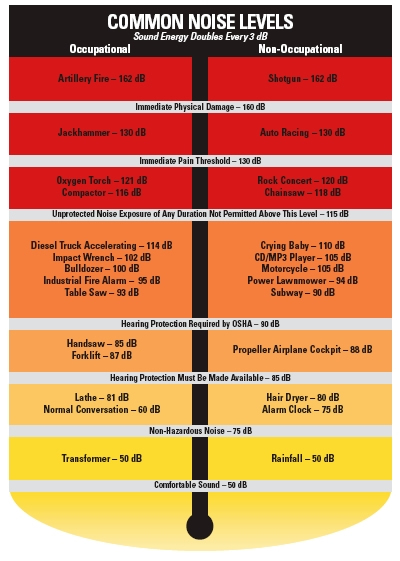
Other sounds seem muffled after you leave an area where there is loud noise.Your ears are ringing after hearing the sound. The rule is that decibel levels go down by six every time you double the distance between you and the noise.You have trouble talking or hearing others talk over the sound.
#Decibel level chart how to#
How to know when noise levels may be harmfulĪn easy way to be more aware of possibly harmful noise is to pay attention to warning signs that a sound might be damaging to your hearing.

Here are examples of noises that produce levels above 85 decibels: But this depends on how long and how often you are exposed to the sound and whether you wear hearing protection, such as earplugs or earmuffs. With the dB(A) filter the sound level meter is less sensitive to very high and very low frequencies. dB(A) roughly corresponds to the inverse of the 40 dB (at 1 kHz) equal-loudness curve for the human ear. dB(A) The decibel A filter is widely used. Sound levels on the chart below are listed in decibels (dBA) the larger the number, the higher the volume or decibel level. dB(A) dB(B) dB(C) Download and print Sound Pressure Level - db(A), dB(B) and dB(C) criteria chart. In general, sounds above 85 decibels (dB) are harmful. Sound Level Chart Equipment and daily activities at construction job sites can expose workers to high levels of noise. But any sound that is loud enough and lasts long enough can damage hearing and lead to hearing loss. Some people's ears are more sensitive to loud sounds, especially at certain frequencies.

The effects of noise on hearing vary among people.


 0 kommentar(er)
0 kommentar(er)
